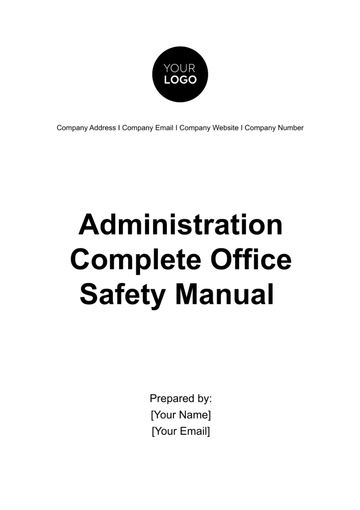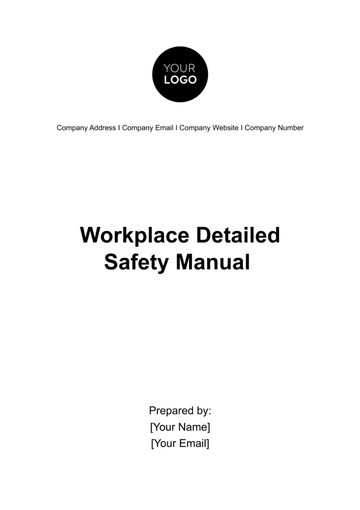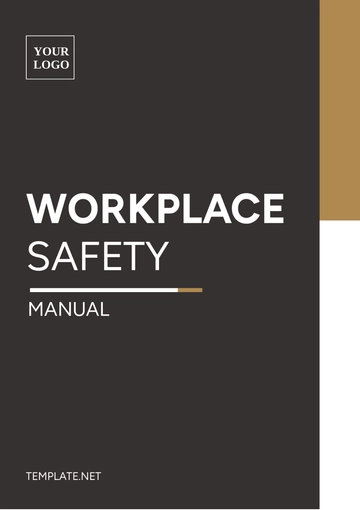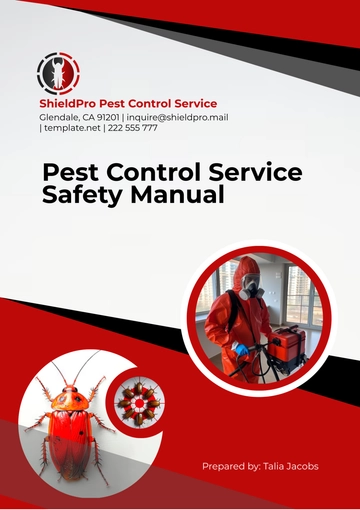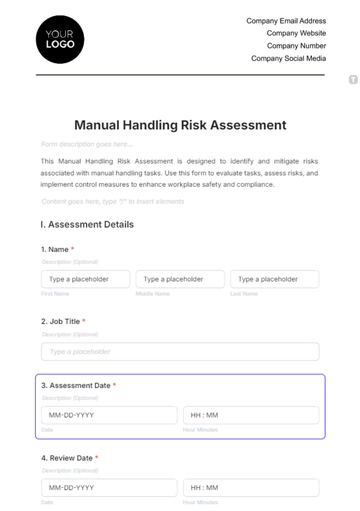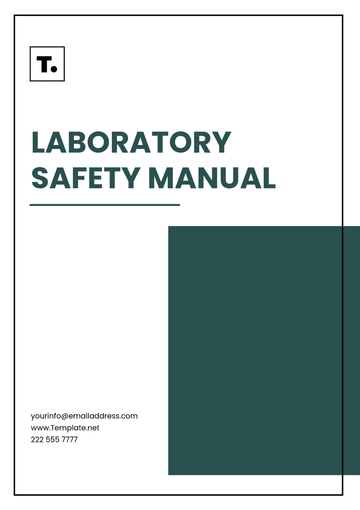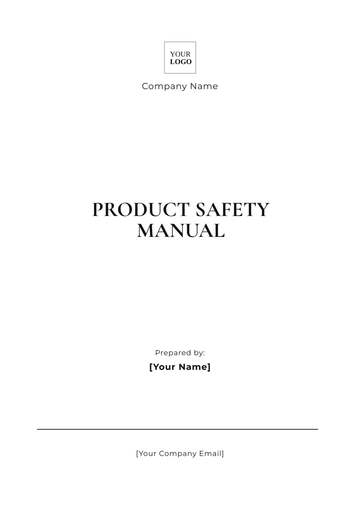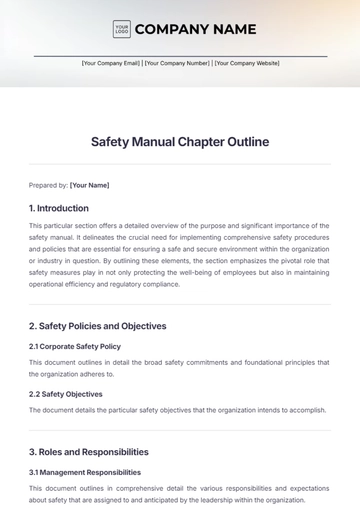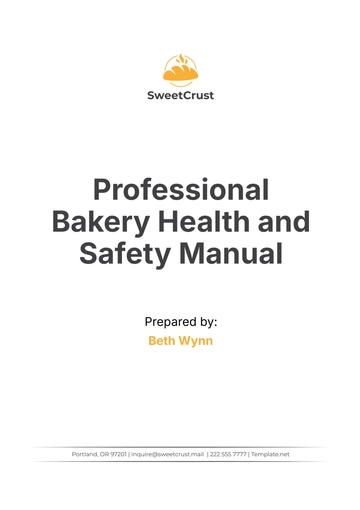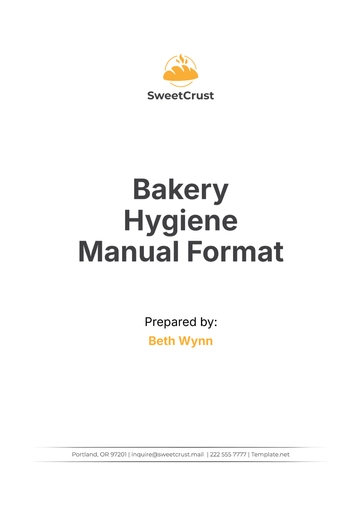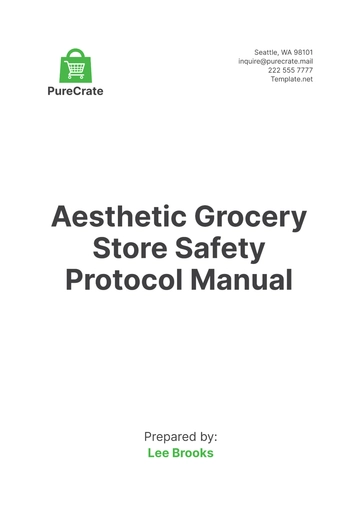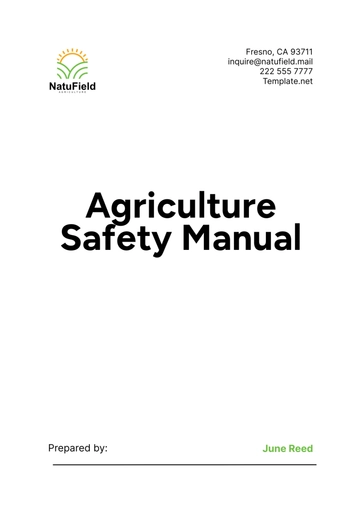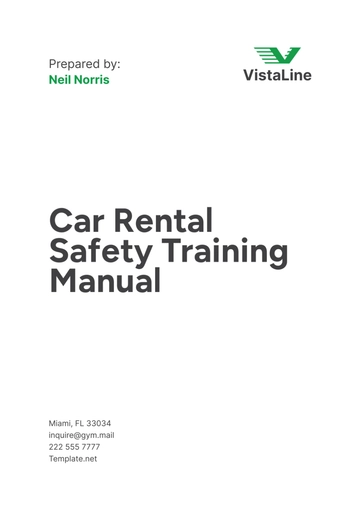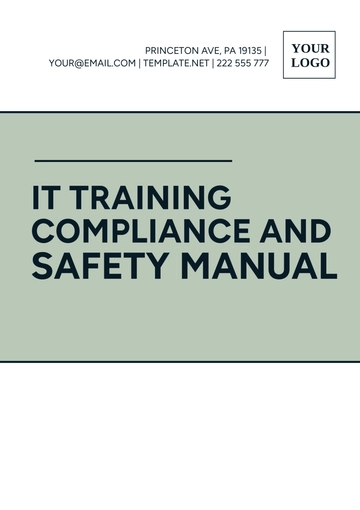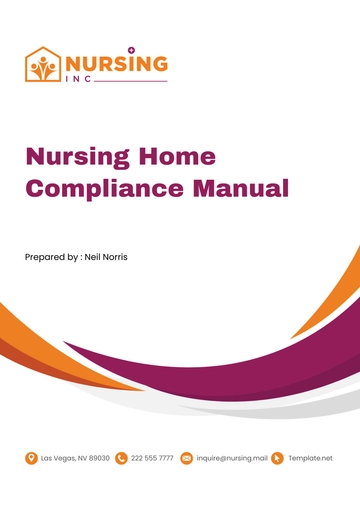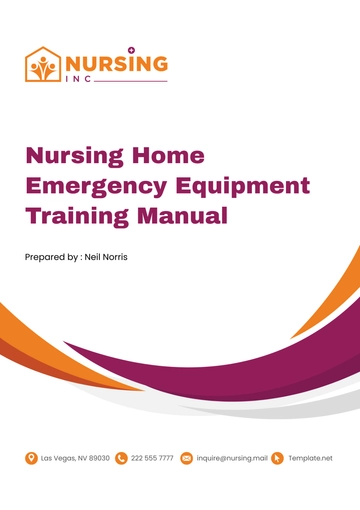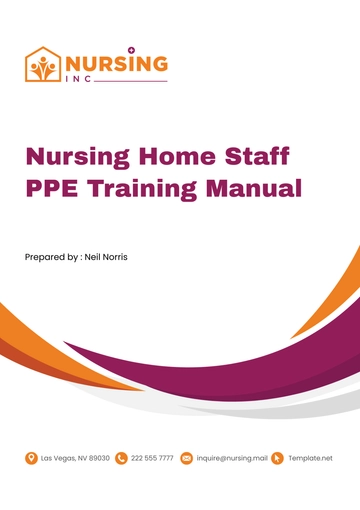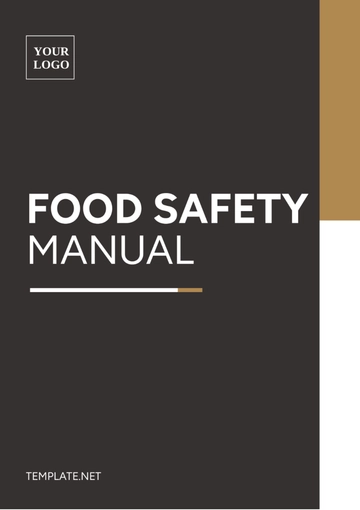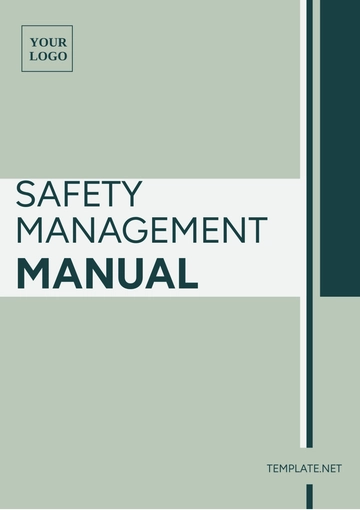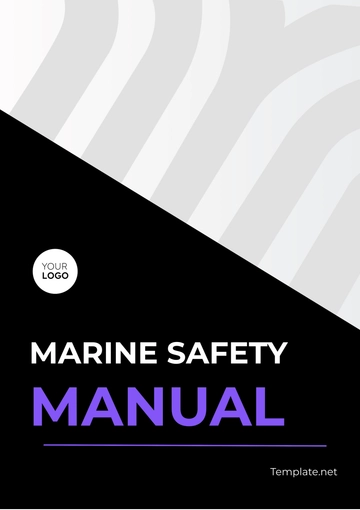Free Health & Safety Legal Compliance Manual
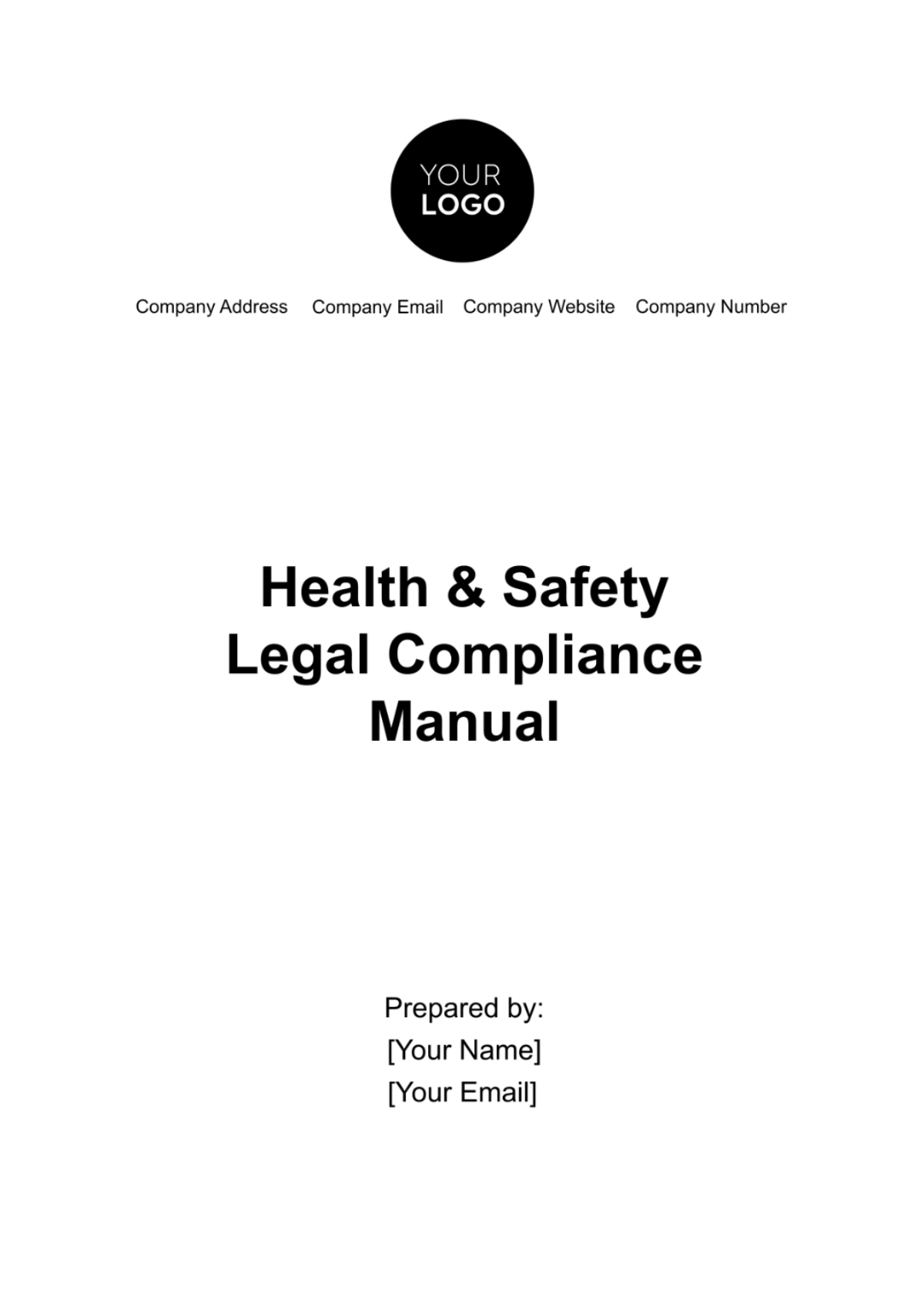
I. Introduction to Health & Safety Legal Compliance
Understanding and adhering to health and safety laws is crucial for every organization. This section introduces the key health and safety regulations that apply to the workplace. It emphasizes the significance of compliance, not only as a legal obligation but also as a commitment to protecting employee well-being.
Overview of Health & Safety Laws:
In this manual, we provide a thorough introduction to the pertinent health and safety laws and regulations that are crucial for maintaining a safe and compliant workplace. It encompasses a detailed overview of federal guidelines, such as those set forth by the Occupational Safety and Health Administration (OSHA), along with state-specific regulations that may apply. Understanding these laws is vital for every organization, as they lay the foundation for safe work practices and set the legal standards for workplace safety. Compliance with these regulations is not only a legal requirement but also a moral obligation to ensure the well-being and safety of all employees.
Purpose of Compliance:
The purpose of compliance with health and safety laws transcends mere adherence to legal mandates; it is a critical component in safeguarding workplace safety and fostering a culture of well-being. Compliance is pivotal in preventing workplace incidents and injuries, thereby ensuring the health and safety of every employee. It also shields the organization from potential legal repercussions, including fines and litigation, which can arise from non-compliance. More than a legal obligation, it reflects the organization's commitment to ethical practices and its dedication to creating a secure and healthy work environment, thus upholding its reputation and maintaining trust among employees and stakeholders.
II. Compliance Framework
The compliance framework serves as the backbone of the organization's health and safety efforts. This section outlines the structured approach to maintaining compliance, detailing the hierarchy and channels through which safety information and directives flow. It defines the specific roles and responsibilities at various levels - from top management to individual employees - ensuring clarity in who is accountable for what aspects of health and safety. This framework is the foundation for a cohesive and efficient compliance strategy.
A. Compliance Structure
The compliance structure of our organization is a well-defined framework designed to ensure adherence to health and safety laws and regulations. At the core of this structure is a dedicated Health and Safety Compliance Team, responsible for the continuous monitoring and evaluation of workplace practices against legal standards. This team is supported by a hierarchical compliance network that spans across various organizational levels, ensuring that health and safety responsibilities are integrated into every department.
Central to the compliance structure is a systematic approach that includes regular training sessions, scheduled audits, and continuous policy reviews. The structure facilitates clear communication channels for reporting potential hazards, incidents, and non-compliance issues. It also includes a feedback mechanism that allows for the dynamic adjustment of policies and procedures to reflect changes in legal requirements and workplace needs.
B. Roles and Responsibilities
Definition of roles and responsibilities at various organizational levels for compliance.
Stakeholder | Responsibilities |
Senior Management | Policy endorsement, resource allocation, culture fostering |
Health and Safety Compliance Team | Developing compliance strategies, conducting audits, training, and communication |
Department Managers | Enforcing health and safety policies, ensuring team compliance |
Employees | Adhering to guidelines, participating in training, reporting hazards |
Health and Safety Representatives | Liaising between employees and compliance team, communicating concerns |
III. Risk Assessment and Management
Risk assessment is a systematic process to identify potential hazards in the workplace. This section guides how to conduct these assessments effectively, considering factors like the likelihood of occurrence and potential impact. It also covers the proper documentation and reporting of these assessments, which is critical for tracking and addressing risks. The management of identified risks, including the implementation of control measures and regular review of their effectiveness, is detailed in this section.
A. Risk Assessment Procedures
Step | Description |
Identification of Hazards | Identify potential hazards in the workplace through inspections, employee feedback, and accident history analysis. |
Risk Analysis | Assess the likelihood and potential impact of identified hazards to prioritize risks. |
Risk Mitigation | Develop and implement measures to mitigate identified risks, including changes in processes, use of protective equipment, and training. |
Review and Update | Regularly review and update risk assessments to ensure they remain relevant and effective. |
Communication of Findings | Communicate findings and updates to all relevant stakeholders, ensuring awareness and understanding of risks and mitigation strategies. |
This table outlines the step-by-step procedures for risk assessment and management in the workplace. It ensures a systematic approach to identifying, analyzing, and mitigating risks, maintaining ongoing effectiveness, and effective communication of findings.
B. Documentation and Reporting
Aspect | Description |
Record Keeping | Maintain detailed records of all risk assessments, including methodologies and findings. |
Incident Reporting | Establish a clear process for reporting workplace incidents and hazards. |
Compliance Records | Keep records of compliance with legal and organizational safety standards. |
Audit Documentation | Document findings and recommendations from safety audits, including follow-up actions. |
Stakeholder Communication | Ensure effective communication of risk-related information to relevant stakeholders, including management and employees. |
This table details the crucial aspects of documentation and reporting in the risk assessment process. It covers maintaining comprehensive records, reporting incidents, documenting compliance, and effective communication, all of which are essential for a transparent and accountable approach to risk management.
IV. Health & Safety Policies and Procedures
Developing robust health and safety policies is essential for legal compliance. This section describes the process of creating, regularly reviewing, and updating these policies. It highlights the need for policies to be comprehensive, covering all aspects of workplace safety, and reflective of current legal standards. The implementation of these policies through clear, actionable procedures is also discussed, ensuring that safety practices are not just theoretical but actively applied in the workplace.
A. Development of Policies
Steps for creating and updating health and safety policies.
Step | Description |
Policy Drafting | Draft comprehensive health and safety policies tailored to organizational needs and risks. |
Legal Review | Conduct a thorough legal review to ensure policies comply with health and safety laws and regulations. |
Stakeholder Consultation | Consult with key stakeholders, including department heads and employee representatives, for input and feedback. |
Approval and Endorsement | Gain formal approval and endorsement from senior management to legitimize policies. |
Regular Review and Update | Regularly review and update policies to reflect changes in laws, standards, and workplace conditions. |
B. Implementation of Procedures
Guidelines for implementing safety procedures in line with legal requirements.
Procedure | Description |
Training and Education | Conduct regular training sessions to educate employees on health and safety procedures. |
Policy Communication | Effectively communicate policies to all employees, ensuring understanding and accessibility. |
Monitoring and Enforcement | Monitor adherence to safety procedures and enforce policies through regular checks and audits. |
Incident Response | Implement a clear and effective process for responding to health and safety incidents. |
Feedback and Continuous Improvement | Encourage feedback from employees and continuously improve procedures based on this feedback and ongoing risk assessments. |
V. Training and Awareness Programs
Training and awareness are key to reinforcing the importance of health and safety in the workplace. This section outlines the mandatory training programs required for various employee levels, ensuring that all staff are adequately informed about safety practices and legal requirements. It also suggests strategies for ongoing safety awareness initiatives, such as regular workshops, bulletins, and safety drills, to keep health and safety at the forefront of organizational culture.
A. Training Requirements
Effective training is a cornerstone of any robust health and safety program. This aspect involves identifying and implementing mandatory training sessions tailored to different levels of employees within the organization. For new hires, basic health and safety orientation is essential, while specialized training is required for those in higher-risk roles or supervisory positions. Regular refresher courses are also critical to ensure all staff remain up-to-date with the latest safety protocols and legal requirements. The training content covers emergency procedures, correct use of safety equipment, hazard recognition, and best practices for workplace safety.
Advanced training modules are developed for management and health and safety officers, focusing on risk assessment, incident investigation, and compliance management. The effectiveness of these training programs is regularly evaluated, and adjustments are made based on feedback and evolving workplace needs. This systematic approach to training ensures that each employee, regardless of their role, is equipped with the necessary knowledge and skills to maintain a safe working environment.
B. Awareness Initiatives
Awareness initiatives play a pivotal role in embedding a culture of safety within the organization. These strategies include regular safety campaigns, workshops, and interactive sessions that engage employees and keep health and safety at the forefront of their daily activities. Creative approaches like safety-themed events, competitions, and rewards for safe practices are employed to maintain high levels of engagement and interest.
Additionally, communication channels such as newsletters, safety bulletins, and digital platforms are utilized to disseminate important safety updates, share best practices, and highlight changes in safety legislation. These initiatives not only inform but also encourage active participation from employees in safety matters. By fostering an environment where health and safety are openly discussed and prioritized, these awareness initiatives contribute significantly to reducing workplace accidents and promoting a culture of proactive safety management.
VI. Monitoring and Review
Regular monitoring and review are critical for ensuring that health and safety practices remain effective and legally compliant. This section details the methods and frequency of compliance monitoring, such as audits and inspections. It emphasizes the importance of a dynamic approach to health and safety, where policies and practices are regularly reviewed and updated in response to changes in legal requirements, industry standards, or specific workplace needs.
Compliance Monitoring
Monitoring compliance is an integral part of maintaining a safe workplace. Regular on-site inspections and audits are conducted to assess the practical application of safety policies. The utilization of digital tools and software for continuous monitoring of compliance indicators is also emphasized. Additionally, spot checks and employee interviews are used to gauge the actual understanding and implementation of safety protocols.
The effectiveness of training programs and safety drills is also evaluated as part of compliance monitoring. Employee feedback and incident reports are analyzed to assess the real-world impact of safety measures. These methods provide a multidimensional view of compliance, encompassing not just the physical aspects of the workplace but also the behavioral and procedural adherence to safety standards.
Regular Review and Update
The nature of workplace environments and evolving legal standards necessitate regular reviews and updates of compliance practices. This process includes a periodic reevaluation of all health and safety policies and procedures. Any changes in legislation, technological advancements, or shifts in workplace practices prompt a review to ensure ongoing relevance and effectiveness. This proactive approach prevents the organization from falling behind current standards and practices.
The review process is collaborative, involving inputs from various departments and levels within the organization. Feedback from employees, insights from safety audits, and findings from incident investigations contribute to shaping updated policies. These reviews are scheduled at regular intervals and after any significant incident or change in legal requirements. Updates are then communicated across the organization, ensuring that everyone is informed about the new standards and practices. This cycle of review and update is crucial for maintaining a living, responsive health and safety program that continuously evolves to meet the needs of the organization and its employees.
- 100% Customizable, free editor
- Access 1 Million+ Templates, photo’s & graphics
- Download or share as a template
- Click and replace photos, graphics, text, backgrounds
- Resize, crop, AI write & more
- Access advanced editor
Explore Template.net's Health & Safety Legal Compliance Manual Template, an essential resource for ensuring regulatory adherence. Effortlessly customize and edit manuals with our AI Editor Tool to align with your organization's legal requirements. Enhance compliance and mitigate risks with this editable and customizable solution, streamlining your health and safety protocols.

